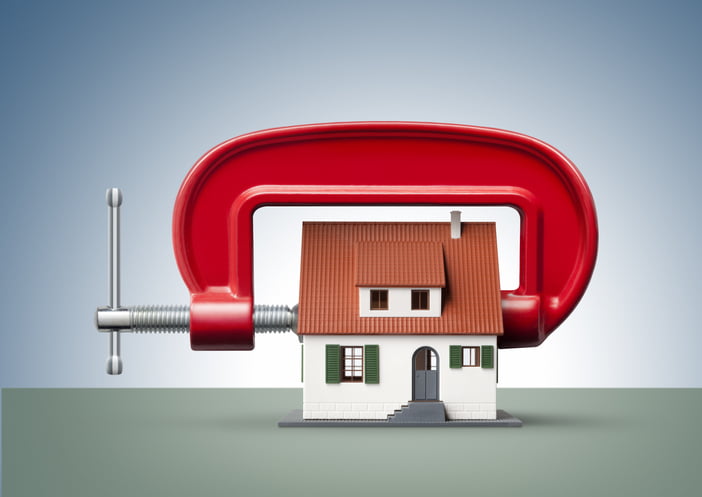Don’t Let Closing Costs Catch You Off Guard
First-time homebuyers are often on a tight budget, where every dollar is carefully accounted for. Yet, many report confusion when told how much money to bring to their lawyer’s office to complete their home purchase. It’s often thousands more than they expected. Why is that? And how can you better prepare yourself?
Today we will focus on the three biggest items that come up quite frequently as unexpected costs: property tax adjustments; mortgage interest adjustments; and PST on mortgage-default insurance. We don’t count items like land transfer taxes because they are (mostly) expected.
Property Tax Surprises
There are two ways property taxes can surprise you on your closing date.
1) The seller may have already paid property taxes for the full year, and as such is entitled to a credit for their unused portion. We call these prepaid property taxes.
 Suppose your annual taxes are $7,200 and your seller prepaid the full year. With a closing date of August 13, you need to give back 140 days worth of taxes. That’s just over $2,760.
Suppose your annual taxes are $7,200 and your seller prepaid the full year. With a closing date of August 13, you need to give back 140 days worth of taxes. That’s just over $2,760.
2) The other way property taxes can surprise you is when your mortgage lender is going to take a fixed amount for property taxes from your bank account along with every mortgage payment.
This means they are going to accumulate the taxes for you, and remit from time to time to your municipality.
They always start things off by collecting a few months’ worth upfront. It varies by lender and also by where we are in the calendar year. Don’t be surprised if it is three to six months’ worth of taxes. You can see how this adds up if your property taxes are $7,200 per year.
The Mortgage Interest Adjustment Surprise
Every mortgage has an interest adjustment date, which is the date from which your mortgage lender first starts calculating the normal ongoing interest you will pay.
When you close your purchase mid-month, you might have to prepay a few days’ interest on your closing date—it is called an interest adjustment, and it’s to address the stub period between the closing date and the beginning of the first payment cycle. Your lawyer should explain all that when you go to sign the papers.
 The details will depend on your specific lender and how they approach this interest adjustment date. Some mortgage lenders will set your first payment exactly one payment period after your purchase completion date. In that case, the stars are aligned perfectly, and you can skip to the next section of this article. No Interest Adjustment for you.
The details will depend on your specific lender and how they approach this interest adjustment date. Some mortgage lenders will set your first payment exactly one payment period after your purchase completion date. In that case, the stars are aligned perfectly, and you can skip to the next section of this article. No Interest Adjustment for you.
Other lenders might prefer to collect from you on the first day of the month. And in this case, unless your purchase date is also on the 1st, there will be a partial month’s worth of interest your lawyer will collect from you, to adjust things until everything aligns perfectly.
Here is an example where you borrow $869,400 with, say, a 5-year variable interest rate of 1.86%:
- Your closing date is August 13, 2020
- Your first scheduled payment is set for October 1, 2020.
- Your Interest Adjustment Date is September 1.
- Your lawyer will collect an interest adjustment from you for the period August 13th to September 1.
- That would be an extra $840.56 you may not have been expecting.
- This adjustment comes into play, whether you choose monthly, weekly, biweekly or semi-monthly payments.
Neither way is wrong or right, they are just different, and result in a difference of how much money you need on your purchase closing date. As Rob McLister wrote here, “keep in mind, it is possible to avoid interest adjustments altogether. To do so, you need to schedule your first mortgage payment exactly one payment period (e.g., one month) after your closing date.”
The Provincial Sales Tax (PST) Surprise
If your down payment is less than 20% of the purchase price, you must purchase mortgage-default insurance (MDI) to protect your lender in case you fail to maintain your mortgage payments.
How much are we talking about for MDI insurance?
Well, if your down payment is less than 10% of the purchase price, this one-time MDI premium is 4% of the loan amount. But, you must pay Provincial Sales Tax (PST) on the insurance premium, and that must come from your own pocket and cannot be added to your mortgage.
 As for the MDI premium itself, pretty much everyone just adds this to their core mortgage balance, and repays it over the life of their mortgage.
As for the MDI premium itself, pretty much everyone just adds this to their core mortgage balance, and repays it over the life of their mortgage.
Suppose you want to buy a $900,000 townhome in Vaughan, ON, with a $65,000 down payment. Note that if you are going to put less than a 20% down payment on your home, then you must have mortgage insurance. This means your initial mortgage loan request would be $835,000 (cost of home – down payment).
Now you must factor in your insurance premium (4% of your initial mortgage loan amount). This would add a hefty $33,400.
But that’s OK, that $33,400 will simply be added into your total mortgage loan amount. It will be paid over time and included in your regular mortgage payment. So now your total mortgage loan amount is $869,400 (mortgage loan + insurance premium).
Remember our first point?
You must pay PST on the MDI premium, and that must come from your own pocket and cannot be added to your mortgage.
If you live in Ontario, you will pay 8% PST on your insurance premium to your real estate lawyer, which in this case is an extra $2,672* you may not have planned for, and this you must pay out of pocket.
*8% PST of $33,400 (insurance premium) = $2,672
PST Rates Across Canada:
- 8% Ontario
- 7% British Columbia
- 0% – In Alberta, Yukon, Nunavut and the North West Territories, you do not have to pay PST.
You can also find your provincial sales tax rates here.
The Takeaway
You can see how these three items could add up to a sizeable sum. In our example, they total more than $6,000, but the actual costs will be different for each buyer. For these specific items, it will come down to:
- Is your down payment less than 20%, and thus you have an insured mortgage?
- Do you live in a province where you are subject to PST?
- Will your lender collect property taxes from you, or will you pay them directly?
- Did your seller prepay the property taxes on the property you are buying?
- How does your seller establish the Interest Adjustment Date?
Beyond these three potential surprises, there are other items that could become surprise closing costs: Top Ten Things You Need to Budget For When Buying a Home.
You need to understand which of them might pertain to your circumstances, and don’t wait till the last minute to find out. Your real estate lawyer, mortgage broker and real estate agent are all excellent sources of information about your home purchase. Don’t be afraid to ask!

 Yet, homebuying intentions are stronger than ever. The percentage of renters who said they plan to purchase in the next 12 months more than doubled from 7% to 14%, according to
Yet, homebuying intentions are stronger than ever. The percentage of renters who said they plan to purchase in the next 12 months more than doubled from 7% to 14%, according to 





 While these recent small reductions to the mortgage qualifying rate are assisting affordability to a small degree, industry leaders have called on the federal government to proceed with a plan to change how the stress test rate is calculated.
While these recent small reductions to the mortgage qualifying rate are assisting affordability to a small degree, industry leaders have called on the federal government to proceed with a plan to change how the stress test rate is calculated. New condo sales in the Greater Toronto Area (GTA) fell 85% in the second quarter of 2020 compared to the previous year,
New condo sales in the Greater Toronto Area (GTA) fell 85% in the second quarter of 2020 compared to the previous year,  Separation or divorce aren’t things people ever plan for. But the end of a relationship can have a significant impact on planning surrounding your residence—most often your largest asset.
Separation or divorce aren’t things people ever plan for. But the end of a relationship can have a significant impact on planning surrounding your residence—most often your largest asset.